Compound C8H9Cl(A) on treatment with KICN followedd by hydrolysis gives C9H10O2(B). Ammonium salt of (B) on dry disillation yiels (C), wyhich reacts with alkene solution of bromnine to give C8H141N(D). Another compound C8H10O(E) is obtained by the actions by the action of nitrous acid of (D) or by the action of aqueosu potacsh on (A),(E) on oxidation gives the inner anthydide C8H6O4(F) which gaves the inner anthdride C8H4O3(G) on heating Identify the various compounds (A) to (G).
D.U in (A)=(2nC+2)+2Cl−nH2
=(2×8+2)+1−92=5∘
5D.U and (C:H=1:1) suggest benzene ring in (A), with two (Me) groups or one (Et) group.
Reaction with KCN shows that (A) contain 1∘RCl group (i.e., it contains (−CH2Cl) group in the side chain and one (Me) group in the ring).
Reactions:
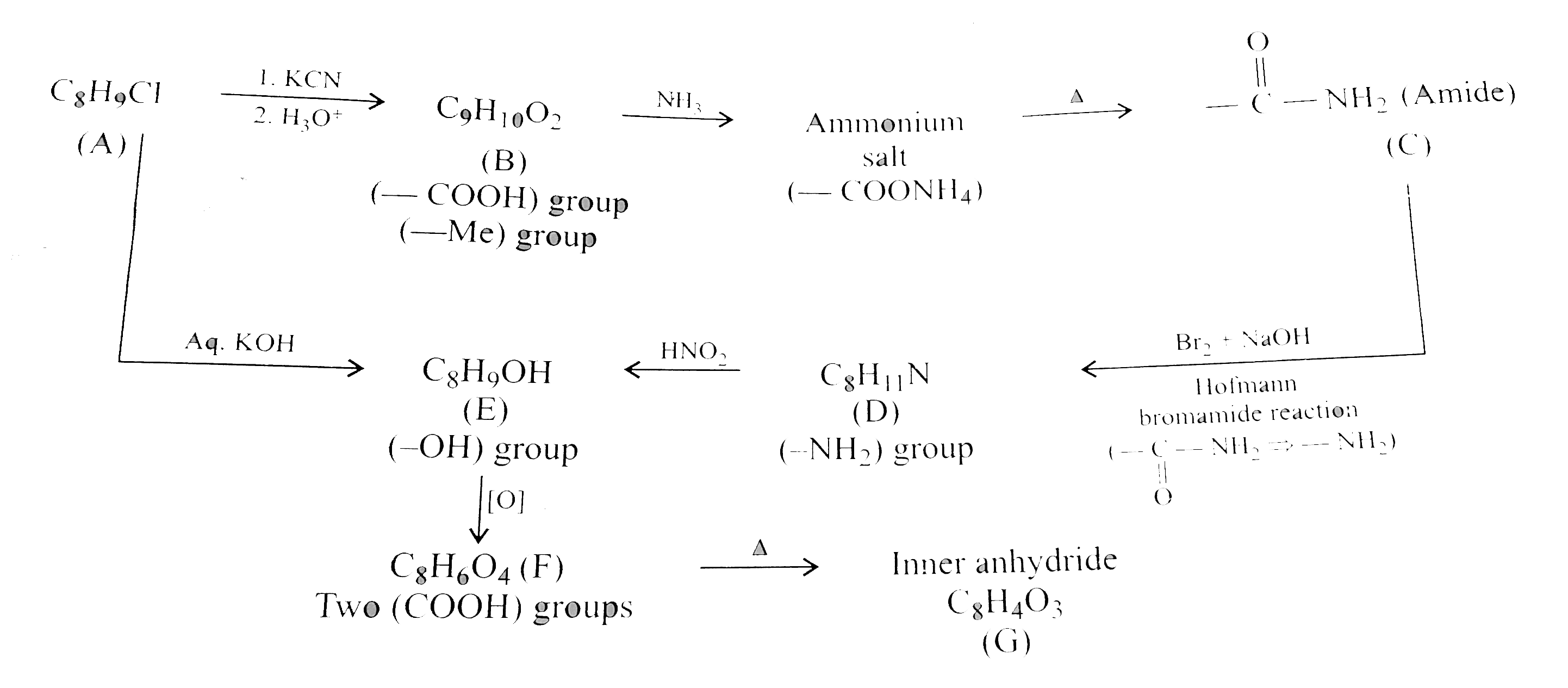
Formation of (G), an anjydride shows that (Me) groupas is at ortho-postion. orthos-diacid froms anhydride.
Reactions:
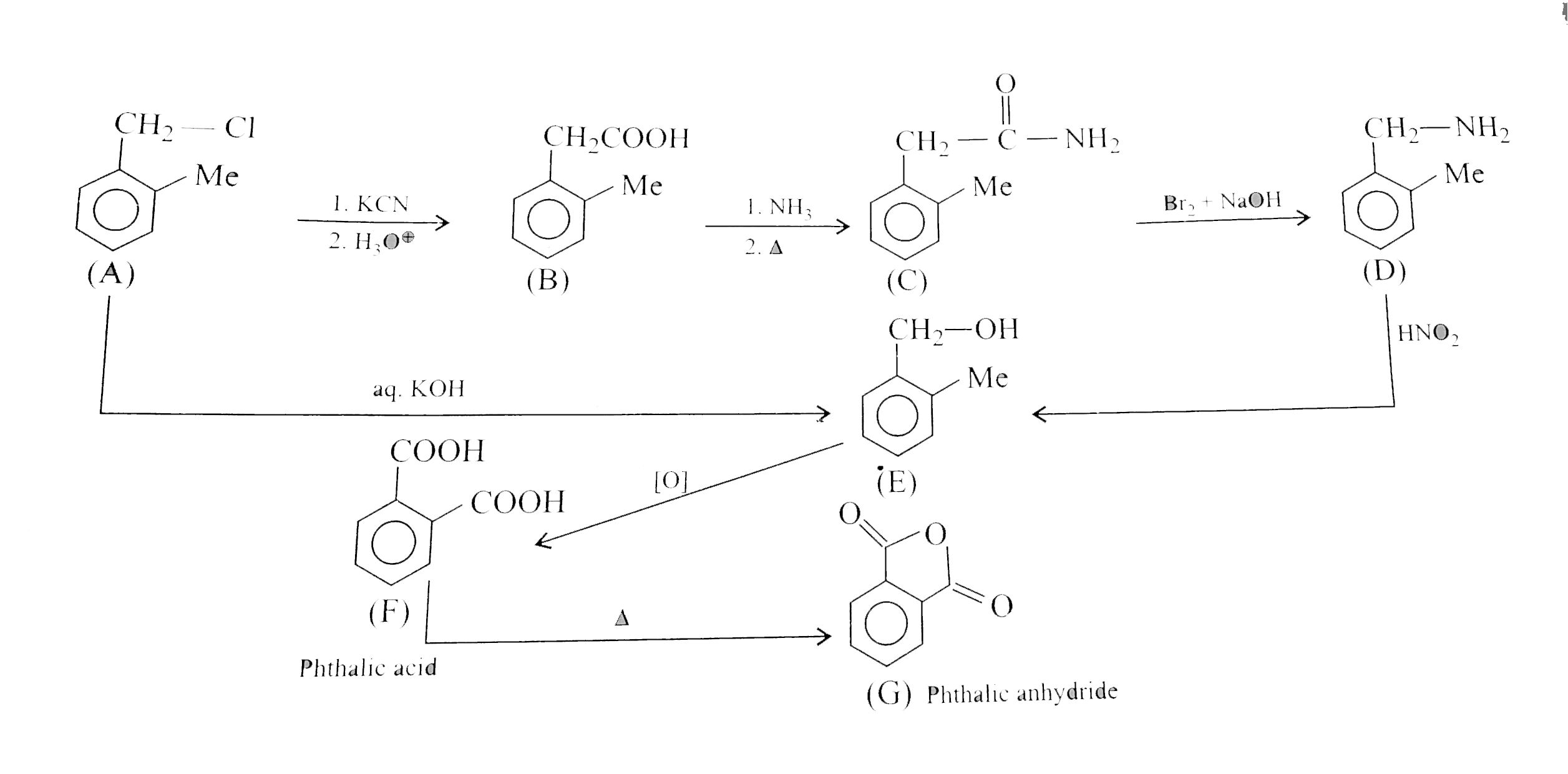
Topper's Solved these Questions
- AROMATIC COMPOUNDS AND ALKYL AND ARYL HALIDES BOOK - CENGAGE CHEMISTRYCHAPTER - AROMATIC COMPOUNDS AND ALKYL AND ARYL HALIDES EXERCISE - Exercises Concept Application Type
2 Videos
- AROMATIC COMPOUNDS AND ALKYL AND ARYL HALIDES BOOK - CENGAGE CHEMISTRYCHAPTER - AROMATIC COMPOUNDS AND ALKYL AND ARYL HALIDES EXERCISE - Exercises Concept Application
4 Videos
- AROMATIC COMPOUNDS AND ALKYL AND ARYL HALIDES BOOK - CENGAGE CHEMISTRYCHAPTER - AROMATIC COMPOUNDS AND ALKYL AND ARYL HALIDES EXERCISE - Exercises Subjective Type
4 Videos
- APPENDIX INORGANIC VOLUME 2BOOK - CENGAGE CHEMISTRYCHAPTER - APPENDIX INORGANIC VOLUME 2EXERCISE - Short Answer Type
179 Videos
- BIOMOLECULESBOOK - CENGAGE CHEMISTRYCHAPTER - BIOMOLECULESEXERCISE - Exercises Archives (Analytical And Descriptive)
8 Videos
Similar Questions
The compound C8H9Cl(A) on treatments with KCN followed by hydrolysis gives C9H10O2(B).Ammonium salt of B on dry distillation yields C.Which reacts with alkaline solution of bromine to gives C8H11N.(D),Another compound E (C6H10O) is obtained by the action of nitrous acid on D. or by the action of aquouspotash on A,E on oxidation gives F(C8H10O) Which gives the inner anhydride G on heating.
The compound D is reaction with CHCl3+NaOH gives a compound H.The structure of H.
View SolutionThe compound C8H9Cl(A) on treatments with KCN followed by hydrolysis gives C9H10O2(B).Ammonium salt of B on dry distillation yields C.Which reacts with alkaline solution of bromine to gives C8H11N.(D)Another compound E is obtained by the action of nitrous acid on D. E on oxidation gives F which gives the inner anhydride G on heating. The Compound A is :
View Solution
Knowledge Check
The compound C8H9Cl(A) on treatments with KCN followed by hydrolysis gives C9H10O2(B).Ammonium salt of B on dry distillation yields C.Which reacts with alkaline solution of bromine to gives C8H11N.(D),Another compound E (C6H10O) is obtained by the action of nitrous acid on D. or by the action of aquouspotash on A,E on oxidation gives F(C8H10O) Which gives the inner anhydride G on heating.
The compound A on reaction with AgCN gives :ACompound HBCompound BCCompound GDCompound DThe compound C8H9Cl(A) on treatments with KCN followed by hydrolysis gives C9H10O2(B).Ammonium salt of B on dry distillation yields C.Which reacts with alkaline solution of bromine to gives C8H11N.(D),Another compound E (C6H10O) is obtained by the action of nitrous acid on D. or by the action of aquouspotash on A,E on oxidation gives F(C8H10O) Which gives the inner anhydride G on heating.
The compound A is :A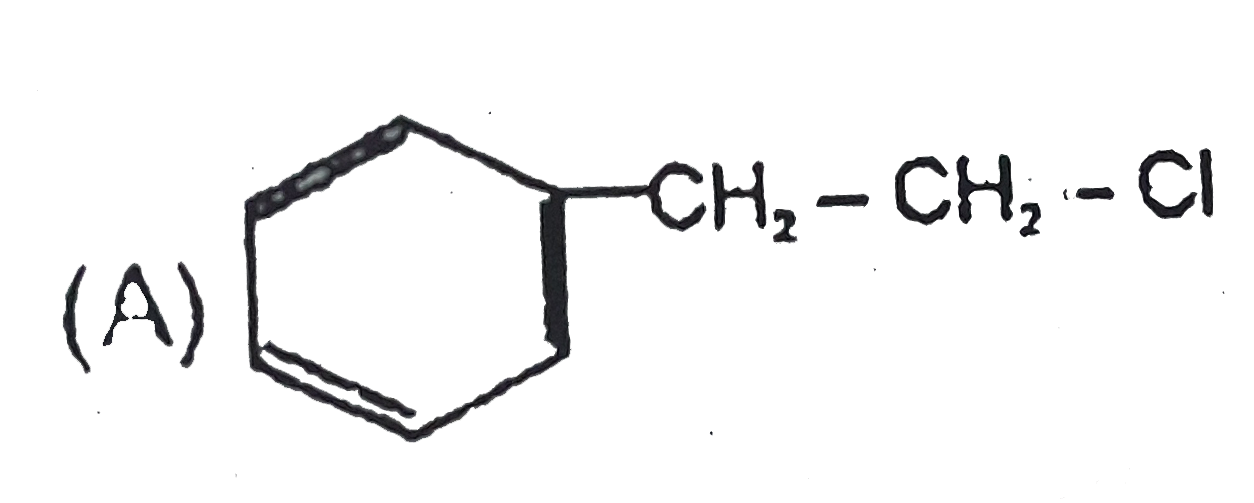 B
B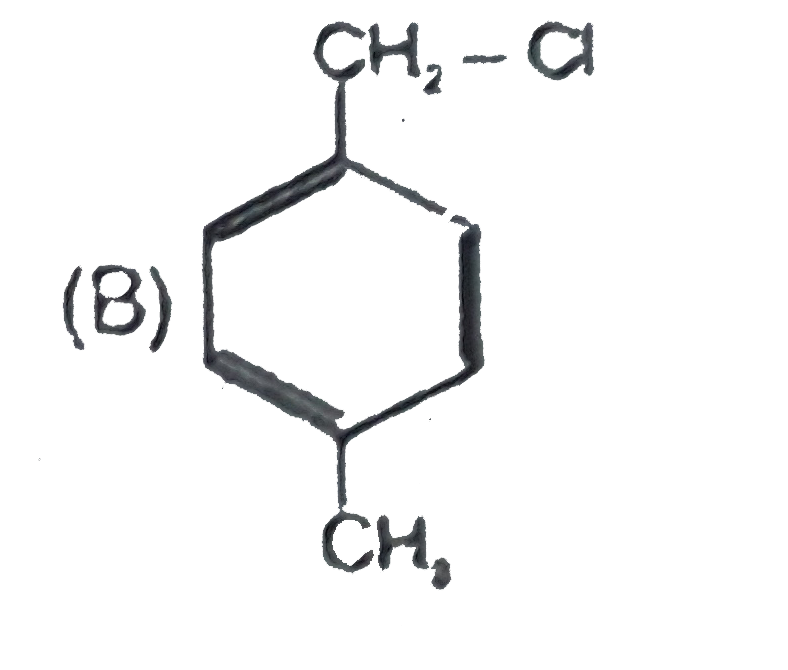 C
C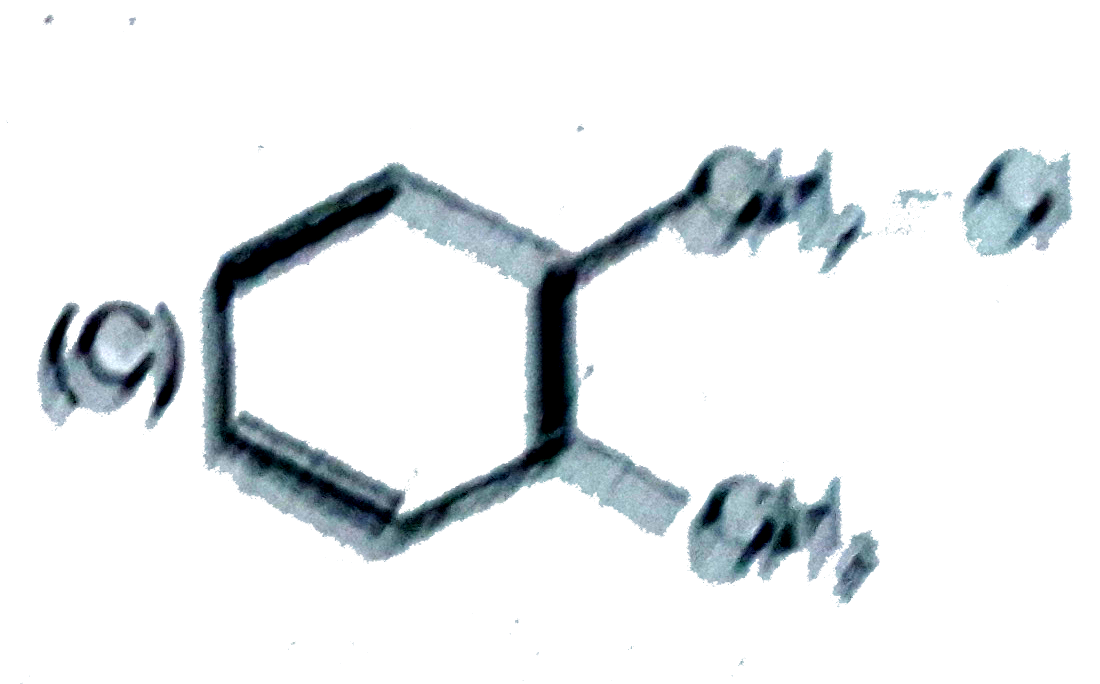 D
D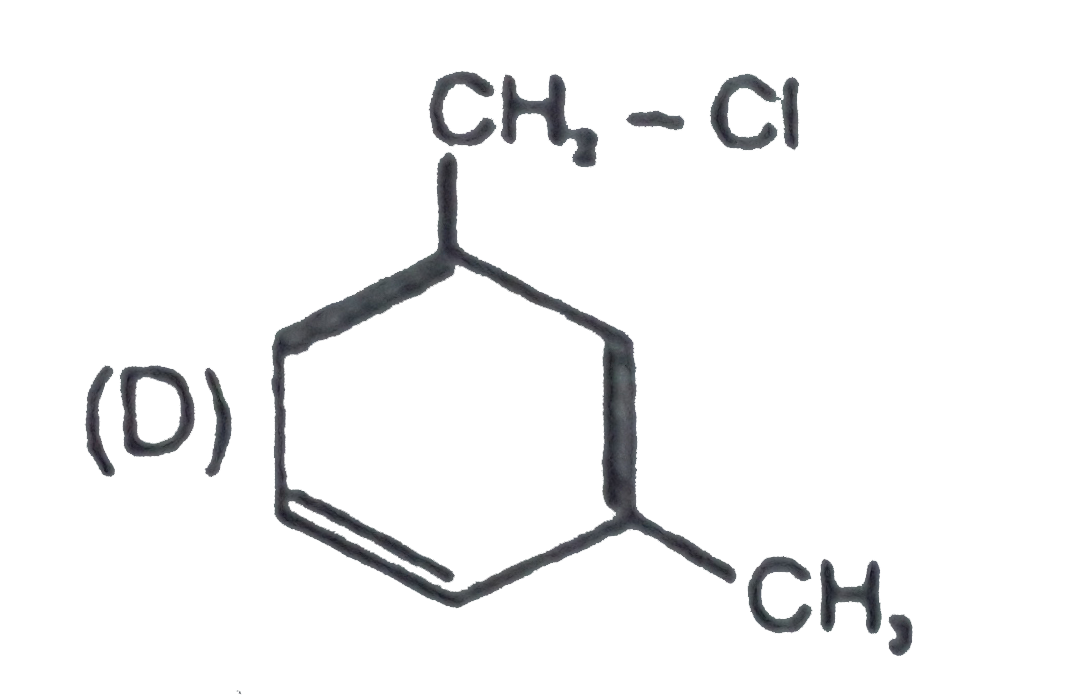
The compound C8H9Cl(A) on treatments with KCN followed by hydrolysis gives C9H10O2(B).Ammonium salt of B on dry distillation yields C.Which reacts with alkaline solution of bromine to gives C8H11N.(D),Another compound E (C6H10O) is obtained by the action of nitrous acid on D. or by the action of aquouspotash on A,E on oxidation gives F(C8H10O) Which gives the inner anhydride G on heating.
The compound D is reaction with CHCl3+NaOH gives a compound H.The structure of H.A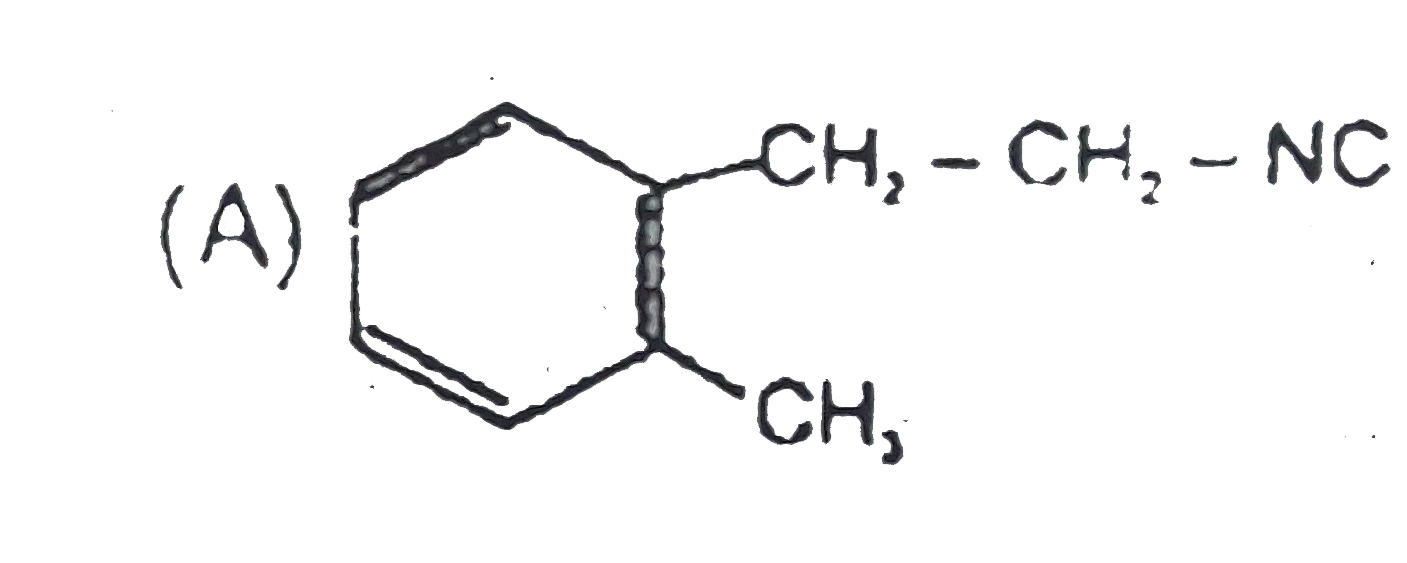 B
B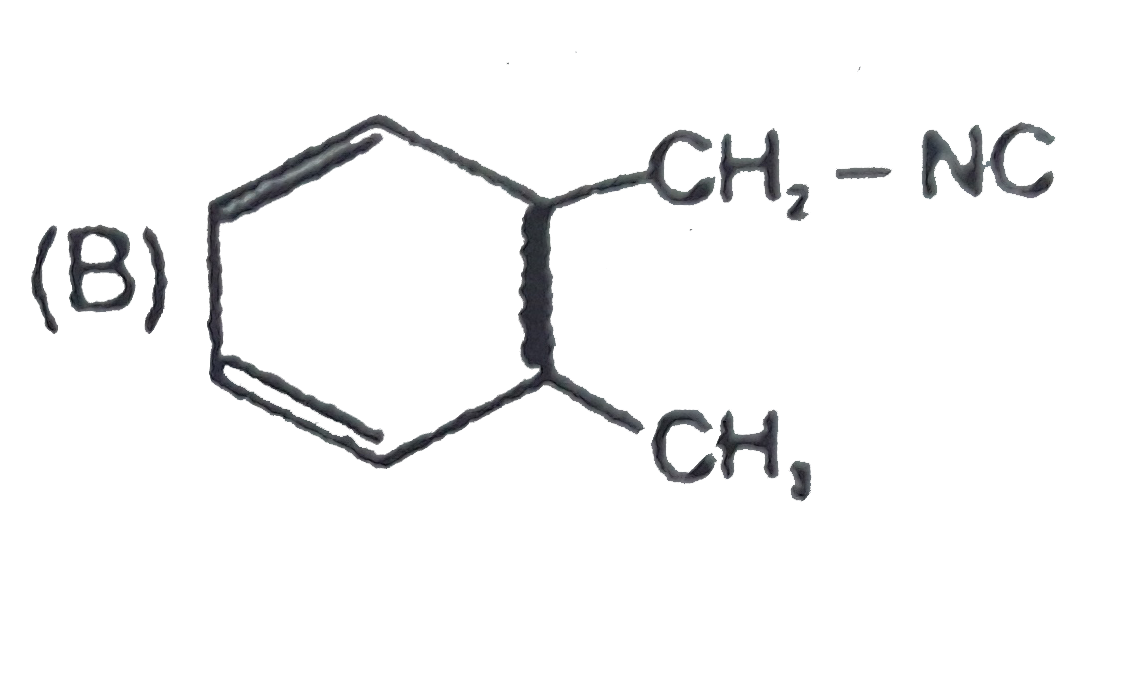 C
C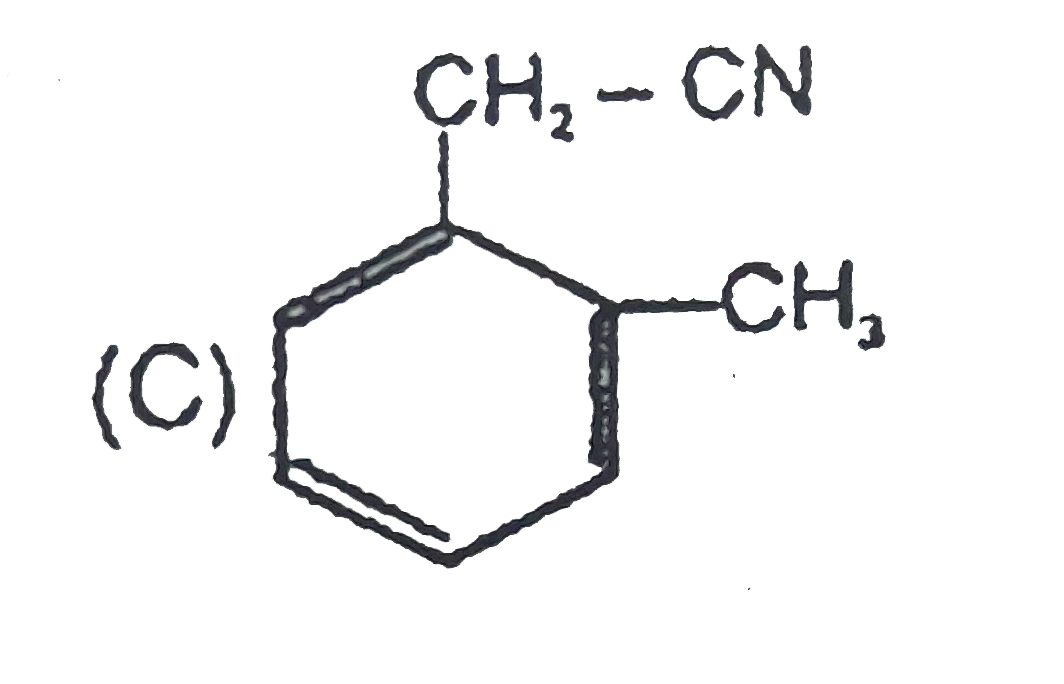 D
D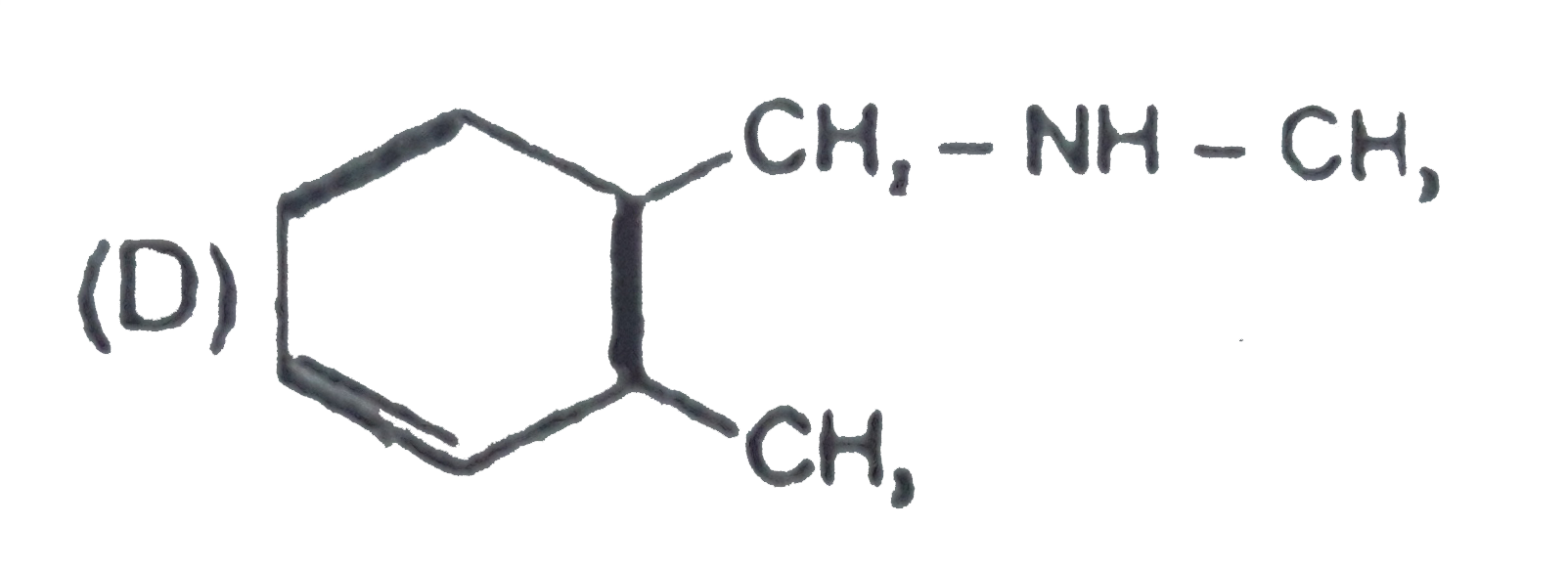
The compound C8H9Cl(A) on treatments with KCN followed by hydrolysis gives C9H10O2(B).Ammonium salt of B on dry distillation yields C.Which reacts with alkaline solution of bromine to gives C8H11N.(D),Another compound E (C6H10O) is obtained by the action of nitrous acid on D. or by the action of aquouspotash on A,E on oxidation gives F(C8H10O) Which gives the inner anhydride G on heating. The compound D is reaction with CHCl3+NaOH gives a compound H.
The compound A on reaction with AgCN gives :
View SolutionON disuphonatioon followed by fusion with NaOH an dacidificant, an aromatic compound C8H10(A) gives two isomeric comnpounds (B) and (C) (molecular formula C8H10O2. Oxidation of esters of (B) and (C) followed by hydrolysis gives two isomers comnpounds (D) and (E)(C7H6O4) which may be decarboxylated to form C6H6O2(F). Identigy compounds (A) to (F).
View SolutionOn nuclear chlorination, C8,H10(A) gives a product (B) which may be oxidised to C8H5O4Cl(C).(A) may alos be chlorinated to give C8H8Cl2(D),C8H6Cl4(E), and C8H4Cl6(F).(D),(E) and (F) on hydrolysis give halogen-free compounds (G),(H), and (I), respectively. With CrCO2Cl2,(A) gives C8H6O4 which is identiacla with (I) . Identify wtih (I). Identify the varioius compounds (A) to (J).
View SolutionOn nuclear chlorination, C8,H10(A) gives a product (B) which may be oxidised to C8H5O4Cl(C).(A) may alos be chlorinated to give C8H8Cl2(D),C8H6Cl4(E), and C8H4Cl6(F).(D),(E) and (F) on hydrolysis give halogen-free compounds (G),(H), and (I), respectively. With CrCO2Cl2,(A) gives C8H6O4 which is identiacla with (I) . Identify wtih (I). Identify the varioius compounds (A) to (J).
View SolutionCompound (A) C8H6O2 on treatment with aq. NaOH followed by acidification gives (B) C8H8O3 which on oxidation gives benzoice acid only :
View Solution
